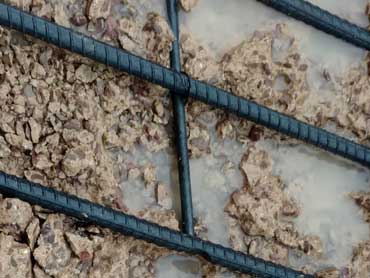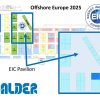What is High Pressure Water Jetting?
High pressure water jetting is simply the use of a jet or jets of water. This waterjet is most often used to clean. However, there are so many other uses for high pressure water jetting. Although a garden hose can create a jet of water, this article focuses on high pressure industrial uses for water jetting.
High Pressure Water Jetting Applications
There are many industrial uses or applications for high pressure water. Each application requires its own range of pressures and flows. Although the first thing considered with water jetting is usually pressure, the flow of water can be critical to the success of an application.
Perhaps the most common application is cleaning. This application often requires only relatively low pressures. More specialist cleaning such as removing marine growth from offshore structures and ships, or de-scaling the inside of chemical storage tanks may require higher pressures. Other high pressure applications include: surface preparation; hydrodemolition; tube and pipe cleaning; vessel and tank cleaning; and cold, abrasive, and waterjet cutting.

Examples of Specialist Applications
Marine Growth Removal
Methods of marine growth removal include mechanical removal, blasting with abrasive grit/garnet, and high pressure waterjetting. Many operators favour water jetting for reasons of quality, environment, and efficiency. The waterjet can be set to such a pressure that removes the marine growth, but does not remove or damage the paint or coating. There is no waste grit released to the environment and we offer options for waste water collection and recycling. Various accessories increase effiency in the removal of growth from large areas.
Concrete Removal
Hydrodemolition, or hydrodem for short, is the removal of concrete using high pressure water. This has traditionally been carried out with a jackhammer. However, jackhammers expose the operator to significant vibrations that can be harmful. The method is also relatively slow and the operator is very close to the work area. High pressure water vastly reduces the operator’s exposure to vibrations. Furthermore, hydrodem robots allow remote operation which increases both operator safety and productivity. With hydrodem, the high pressure water is set at a pressure that removes the concrete, but leaves the underlying rebar undamaged ready for fresh concrete. Even better, where jackhammers cause microcracks in the surrounding concrete, water jetting is selective and removes only the concrete neccessary.

Concreteberg Removal
Yes, they really are a thing! Much like the fatberg you may have seen on the news recently, concretebergs also block sewers and drains. Some believe many concretebergs originate from building sites where poured concrete finds its way into a sewer or drain through an existing crack. Or possibly through a crack caused by the building work. Operators feed tubing with a cutting head attached into the sewer. Water, set to the correct pressure and flow, then removes the concrete. The alternative is usually to dig down to the sewer and remove the blocked section. This can be an expensive operation, especially if other pipes and cables are found between the surface and the sewer. Even worse, if the sewer is below a road, then road closures or temporary traffic lights will cause delays and disruption.
White Line Removal

Traditional methods of road marking removal include grinding and burning. Over recent years, high pressure water jetting has become particularly popular among operators. The pressure and flow are set to remove the paint, but leave the road surface undamaged. Additionally, there are options for waste water collection and recycling.
Is High Pressure Water Jetting Environmentally Friendly?
Many consider high pressure water jetting to be the most environmentally friendly way to clean in industrial settings. Here are three reasons why:
Only Water
Most high pressure water jetting applications use only water. No chemicals.
Water Recycling
There are options to collect the used water and treat it for re-use or for safe discharge back to its source. This is particularly useful where water is scarce or the supply suffers from frequent interruptions. However, even where there are no supply issues, recycling water really is the best option for our environment.
Calder Pump Technology
Pump technology is constantly improving, particularly here at Calder. Where diesel power is currently the only option, we offer the very latest in low emissions technology with the Stage 5 engine. Looking to the future – read high pressure – a green future – we are investigating how our machines can utilise green energy sources for their own power. From another angle, what high pressure pump, compressor and vacuum packages will support the emerging zero carbon industries?
Is High Pressure Water Jetting Safe?
There has been huge improvements in technology and training over the last two decades to make high pressure water jetting the safest method of cleaning, removing and cutting. Why is waterjetting so safe?
Remote Operation
Water jetting has traditionally relied heavily on hand lancing. Operators and manufacturers, in collaboration with the Water Jetting Association have made significant improvements in the safety of hand lancing. However, removing the operator from the work area has to be the ultimate goal. And there are now many accessories that allow you to do just that. Whether removing concrete, paint from a ship, scale from a large tank, there are accessories which do the work and are controlled remotely. These accessories significantly improve operator safety and comfort. And, as a bonus, production rates and finish quality are greatly enhanced.
PPE
The correct provision and use of personal protective equipment is crucial. We use TST protective workwear and safety clothing for the in-house testing of our water jetting equipment. Such is our belief in the quality of TST products, as a UK distributor we have supplied our customers with TST products for over 20 years.
Training
We deliver various high pressure water jetting training courses which fall within two main categories – Water Jetting Association (WJA) approved training and familiarisation training on Calder equipment. As with any industry, proper, high quality training is imperative to the safety of the workforce.
Contact Us
Whatever your application, we are here to help. Please call us on +44 1905 751790 or email sales@calder.co.uk to discuss how high pressure water jetting can help you.

The removal of coatings such as paint or lacquer from substrate surfaces is usually performed prior to the application of a new coating. Prior to the application of the original coating, it is common for the surface to be prepared to specific standards to ensure good adhesion of the coating. Water jetting has the huge advantage of being able to remove the old coating and return the substrate profile to its original condition ready for re-coating. The energy of the high velocity water jets blast into the pores in the metal surface flushing out solid foreign matter and non-water soluble pollutants such as oil and grease.
We supply a variety of surface preparation equipment to make large area surface preparation safer and more efficient.

Hydrodemolition is the removal of concrete using high pressure jets of water. This allows the selective removal of concrete without damaging the rebar or the underlying structure.
Furthermore, other advantages of hydrodemolition over the traditional jackhammer methods are improved operator comfort and increased productivity. Check out our hydrodemolition equipment.

Tubes and pipes can become coated internally with a build-up of deposits or scale as liquids pass through them. There are two main reasons to clean these internal surfaces. Firstly, as the build-up grows, the flow of liquids can become restricted which affects the efficiency of the process. Secondly, where there is a change in the liquid being moved or stored, all traces of the previous liquid need to be removed to avoid cross contamination.
Some methods of cleaning use chemicals to remove the deposits or scale. However, the cost of the chemicals and the environmental issues are removed with the use of water jetting.
Our range of tube and pipe cleaning products allows you to clean pipes that are vertical, horizontal or inclined, light deposits and heavily engrained deposits, and all pipe diameters.

Vessels and tanks can become coated internally with a build-up of deposits or scale as whilt liquids are stored in them. As with tubes and pipes, there are two main reasons to clean these internal surfaces. Firstly, as the build-up grows, the flow of liquids can become restricted which affects the efficiency of the process. Secondly, where there is a change in the liquid being moved or stored, all traces of the previous liquid need to be removed to avoid cross contamination.
We supply tank cleaning heads, nozzles, robotic entry/cleaning systems, and remote controls. In fact, everything you need to clean tanks and vessels.

Waterjet cutting, or cold cutting as it is often known, is the use of waterjets to cut through materials without introducing heat. Other cutting methods create heat which can adversely affect the material being cut. Perhaps more importantly, in areas where there is a risk of fire or explosion, hot work is sometimes not permitted.
Abrasive cutting is simply cold cutting with an abrasive garnet or grit added to aid the cut, particularly through harder materials such as metal. We supply everything you need to achive your waterjet cutting applications.





